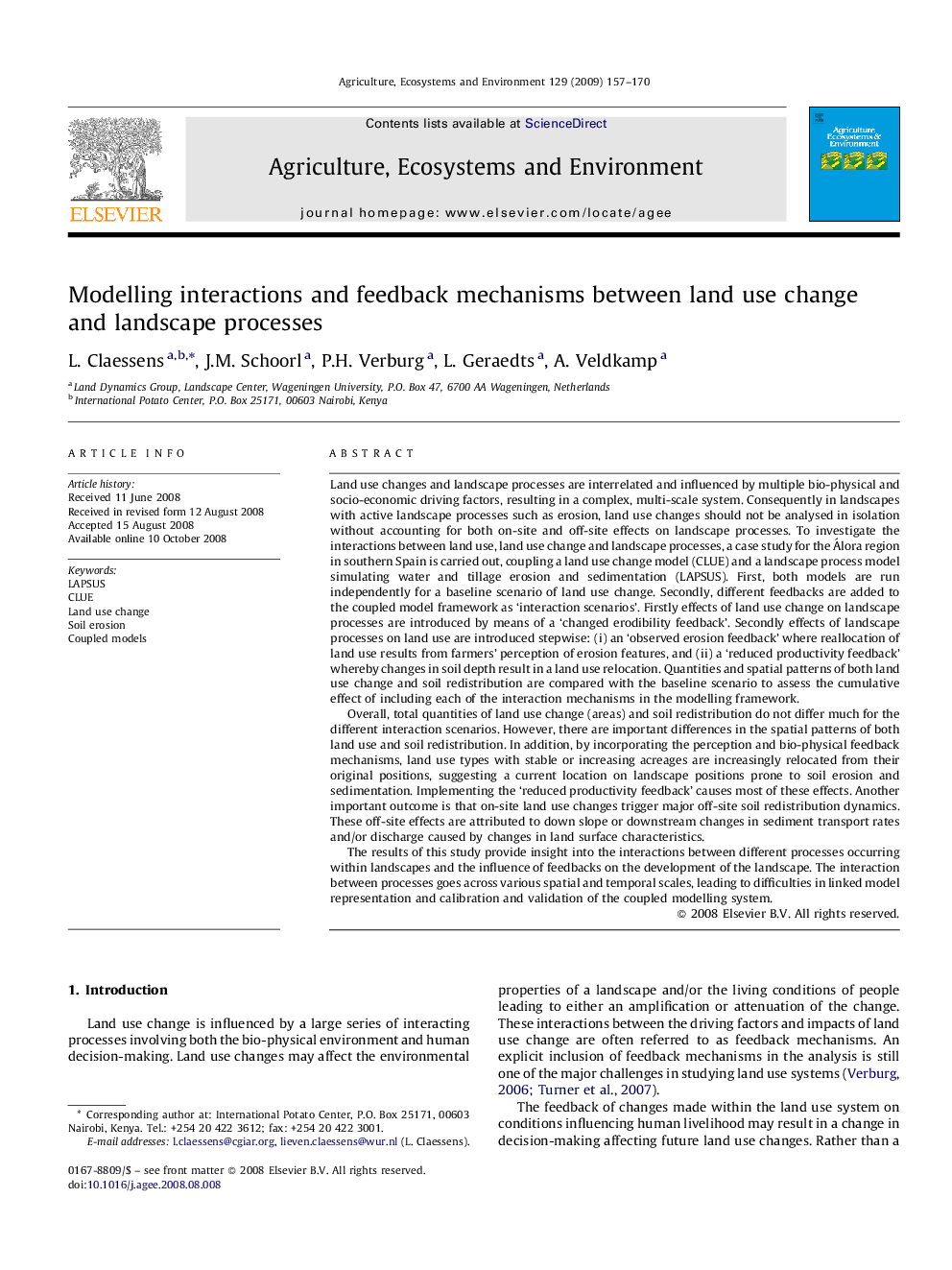| کد مقاله | کد نشریه | سال انتشار | مقاله انگلیسی | نسخه تمام متن |
|---|---|---|---|---|
| 2415311 | 1552130 | 2009 | 14 صفحه PDF | دانلود رایگان |

Land use changes and landscape processes are interrelated and influenced by multiple bio-physical and socio-economic driving factors, resulting in a complex, multi-scale system. Consequently in landscapes with active landscape processes such as erosion, land use changes should not be analysed in isolation without accounting for both on-site and off-site effects on landscape processes. To investigate the interactions between land use, land use change and landscape processes, a case study for the Álora region in southern Spain is carried out, coupling a land use change model (CLUE) and a landscape process model simulating water and tillage erosion and sedimentation (LAPSUS). First, both models are run independently for a baseline scenario of land use change. Secondly, different feedbacks are added to the coupled model framework as ‘interaction scenarios’. Firstly effects of land use change on landscape processes are introduced by means of a ‘changed erodibility feedback’. Secondly effects of landscape processes on land use are introduced stepwise: (i) an ‘observed erosion feedback’ where reallocation of land use results from farmers’ perception of erosion features, and (ii) a ‘reduced productivity feedback’ whereby changes in soil depth result in a land use relocation. Quantities and spatial patterns of both land use change and soil redistribution are compared with the baseline scenario to assess the cumulative effect of including each of the interaction mechanisms in the modelling framework.Overall, total quantities of land use change (areas) and soil redistribution do not differ much for the different interaction scenarios. However, there are important differences in the spatial patterns of both land use and soil redistribution. In addition, by incorporating the perception and bio-physical feedback mechanisms, land use types with stable or increasing acreages are increasingly relocated from their original positions, suggesting a current location on landscape positions prone to soil erosion and sedimentation. Implementing the ‘reduced productivity feedback’ causes most of these effects. Another important outcome is that on-site land use changes trigger major off-site soil redistribution dynamics. These off-site effects are attributed to down slope or downstream changes in sediment transport rates and/or discharge caused by changes in land surface characteristics.The results of this study provide insight into the interactions between different processes occurring within landscapes and the influence of feedbacks on the development of the landscape. The interaction between processes goes across various spatial and temporal scales, leading to difficulties in linked model representation and calibration and validation of the coupled modelling system.
Journal: Agriculture, Ecosystems & Environment - Volume 129, Issues 1–3, January 2009, Pages 157–170